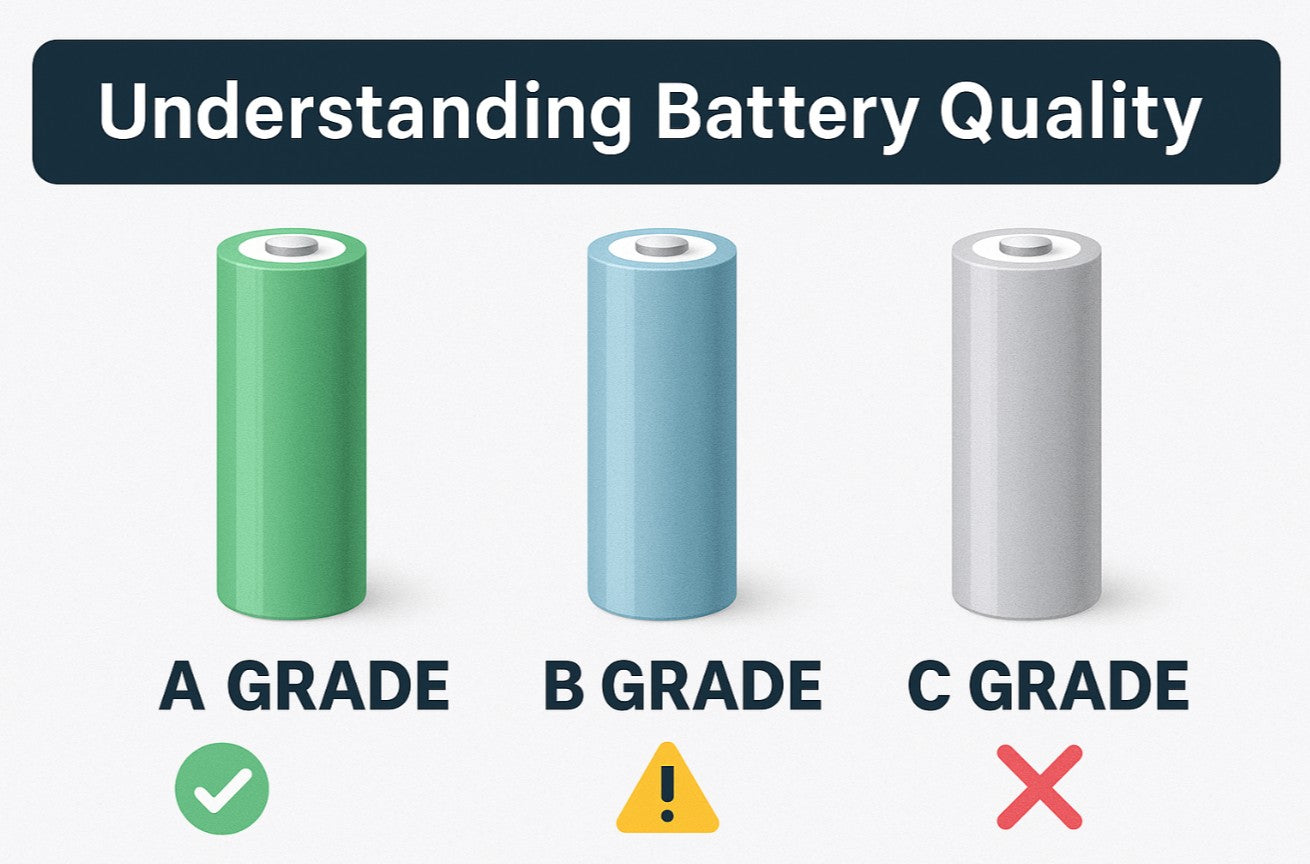Battery Cell Grades Explained: A vs B Grade Lithium Cells – What You Need to Know
We often hear terms like A grade, A- grade, and B grade when talking about lithium battery cells.
But what actually makes a cell A, B, or even C grade?
What Is a C Grade Battery Cell?
Let’s keep it simple — you don’t hear much about C grade because these are usually junk. They can’t be used safely and are often unsellable.
Focusing on A and B Grades
This can be a very extensive and often controversial topic, with lots of opinions. But here’s a clear breakdown based on industry and hands-on experience.
What Is an A Grade Battery?
An A-grade battery cell is one that perfectly meets all the specs listed in the manufacturer’s datasheet.
✅ Example:
Samsung releases a cell rated at 5000mAh (minimum 4900mAh). If the cell lands exactly at 5000mAh:
– The voltage difference between cells is only 2–3mV
– Internal resistance and temperature rise match the datasheet
Then that’s a true A-grade cell.
Real-World Example: JP40 Cells
Tabless cells like the JP40 have a perfect yield rate of under 10%.
Last reported, only 8% of JP40 cells meet perfect spec.
These are extremely hard to manufacture within tight tolerances.
Who Needs Perfect A-Grade Cells?
- Pharmaceutical industry
- Medical device manufacturers
- Aerospace and defense sectors
These industries require absolute precision and will reject anything outside spec — even if it performs better.
So What’s Left for Us?
- ✔️ Cells that exceed datasheet specs (often more expensive)
- ❌ Cells that don’t meet the specs (B-grade)
💡 Example:
The BAK45D cell is rated at 4.4Ah, but the A04 batch gives 4560–4600mAh.
✅ For consumers: more capacity, more watt-hours
❌ For aerospace: rejected, since it’s outside spec
Stability Also Matters
If a batch of cells ranges from 3.3V to 3.5V out of the box — that’s B grade.
👉 My opinion: any cell with a difference over 50mV is B or A- grade.
Is that bad? Not always. A good BMS can still manage them — but let’s be clear — these are not A-grade.
Other Considerations
📦 Cells sitting over 1 year in storage often degrade and fall to A- or B grade — even if they started as A.
There’s a lot more to this (binning, testing, resistance, cycle life), but this is a solid starting point.
Conclusion
Understanding lithium battery classifications helps you buy smarter, safer, and with better expectations.
Want A-grade and tested cells? Click here to shop premium lithium cells at DIY500AMP.COM
This post is based on my personal experience — I welcome your feedback and opinions! Let’s keep learning together.

